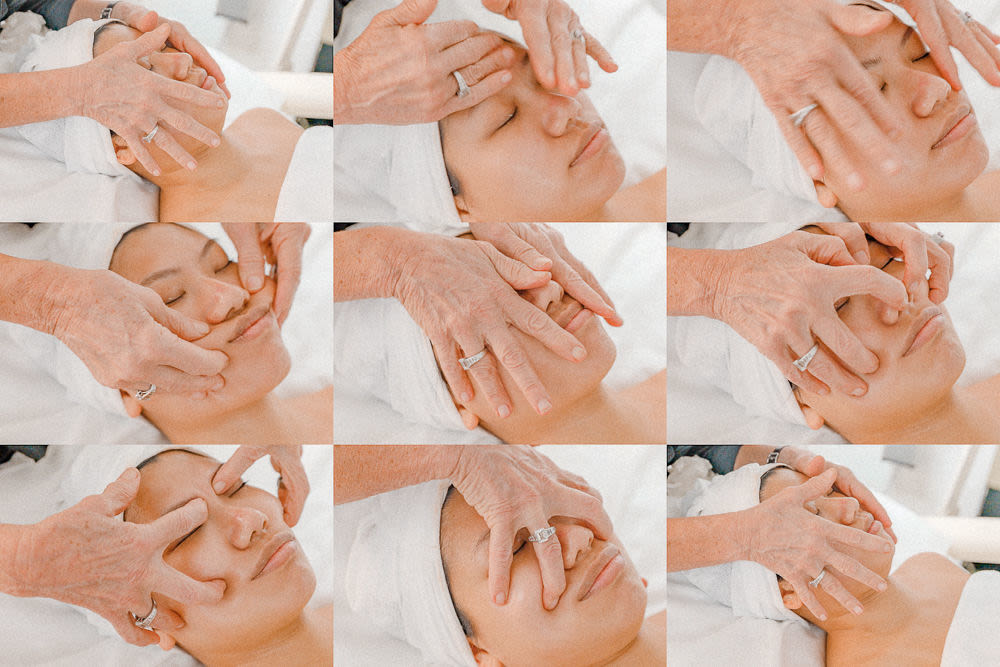Get your passport ready, because the private jet browser is waiting and we’re going on a beauty trip around the world. We’ve done this before, remember? That’s when we hit up Japan, China, India, Morocco, Ghana, Poland, and South Korea for some quality intel on each country’s approach to facials and skincare in general. But this week, we’re taking a different route with a whole new itinerary. Strapped in? Ready to go? Here’s what you can expect when you book a beauty treatment in…
Australia
Where the sun is strong and the skincare is stronger
“Especially in major cities like Sydney and Melbourne, Australia has a very informed customer base with a desire to have good skin. Aside from daily SPF, professional clean-outs are probably the best gift you can give your skin—even if you only go for a facial twice a year. In-salon treatments can do so much heavy lifting, which means your at-home routine can better do its job. Australians can be pretty lo-fi with our skincare: we favor products and routines that are simple and often botanical. A facial always features massage, and plant-based ingredients are used to soothe the skin as it’s resurfaced. On the other hand, we are a nation with intense UV, and many of us have hyperpigmentation issues as a result. Because of that, we are not afraid of more intense, results-forward treatments to get the glow we hanker for. This might entail micro-needling, Dermafrac, peels, or my favorite for before an event: a peel and Laser Genesis combo. We will spend a lot on our face.” —Zoë Foster Blake, founder, Go-To Skincare
Hungary
It’s all about education
“In Hungary, people start getting facials at around 13 years old. In fact, very few Hungarians visit dermatologists to treat acne and other skin problems—they learn how to treat their skin by getting facials. Aestheticians study for three years before taking clients, and the first years are spent learning the science behind how the skin functions. They consider things such as diet, seasonality, and hormones, and then pass that knowledge on to clients. There’s always a big education piece: a Hungarian facial philosophy is all about understanding not only how to treat the skin but also why it behaves in certain ways. The actual facial technique in Hungary is unique due to its massage. Aestheticians use around nine different massage movements, which together work to boost circulation, lift, and tone the facial muscles. On average, people in Hungary get facials about once a month. They are considered fundamental to a healthy beauty regimen.” —Margaret de Heinrich de Omorovicza, co-founder, Omorovicza
Nigeria
Skincare that isn’t too concerned with turning back time
“Back home, age is worn like a crown: you aspire to it. I think that’s why Nigeria doesn’t have a huge culture of facials. In Lagos, you might see things like Hydrafacials and vampire facials, but fighting off aging with skincare isn’t really a thing. Of course, everyone looks after their skin, and Nigerians are all about traditional skincare practices instead, passed down from the women in our families. Nigeria is so humid that we have to shower a lot, sometimes three times a day, which can make our skin quite dry. Skincare in Nigeria is mostly focused on keeping our skin super moisturized and plump with natural, oil-based products, like shea butter. That’s definitely the top skincare staple—I slather my entire body in it every morning. Another great product is black soap, which is native to Nigeria, and we also play around with charcoal and mud masks made from different herbs to deal with particular skin issues. It’s all about consistency—shower, moisturize, shower, moisturize.” —Charon Chuter, founder, Uoma Beauty
Israel
High-tech skincare you have to be patient with
“Biotech is a booming industry for Israel—in fact, the first skin epilator was invented by someone from Israel in the late ‘80s. Facials in Israel are quite high-tech because of this. Instead of going to a spa, you’d go to a licensed aesthetician’s home, where they have special rooms or mini-clinics set up to provide treatments. It can be a very personal experience. Your facial would begin with a full analysis of the skin, determining what it will need to repair itself. Then, products and treatments are recommended to the customer. The focus is on deep cleaning with different tools and brush heads. Israel is a very warm country, so you typically won’t find warm towels or warming ingredients. You’re expected to return in a month or two for another facial, and skin will be re-analyzed for progress. Skincare isn’t a quick process like it can be here in the US—adjustments are made if needed, and you repeat the whole process.” —Ido Magal, founder, Lavido
Colombia
Where a little ol’ facial is just skincare lite
“Skincare plays a huge role in Colombian culture—I would say that skincare treatments are rooted in a Colombian’s DNA. Both men and women start practicing skincare routines from a very early age, and parents frequently gift their kids with facials to educate them on proper skincare habits. Facials are even considered a popular Quinceañera gift for girls entering their prime teenage years. Girls as young as 15 might also ask to get their ‘nose fixed,’ or even for procedures like breast implants and lipo—plastic surgery has become quite popular in Latin America, and especially in Colombia. Caring about the way you look is very much a thing here. Spas are on every corner (you’ll always find one near your house) with facials at accessible prices. Facials are all about making you appear younger—ultrasound, radio frequency, and LED lights are usually on the menu. It’s almost mandatory to go for one monthly.” —Dr. Maribel Pedrozo
Photo via ITG

